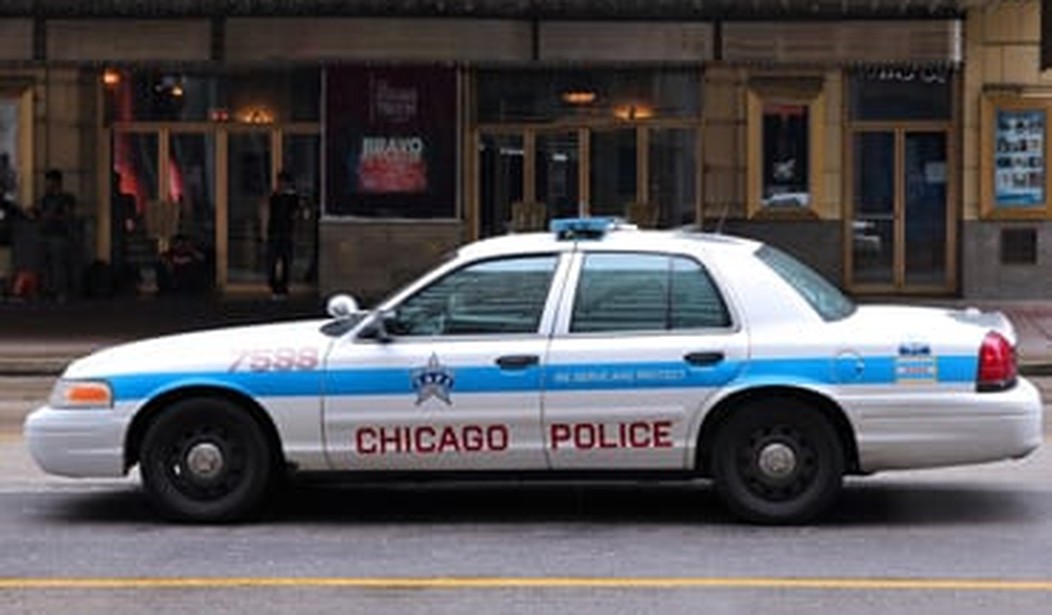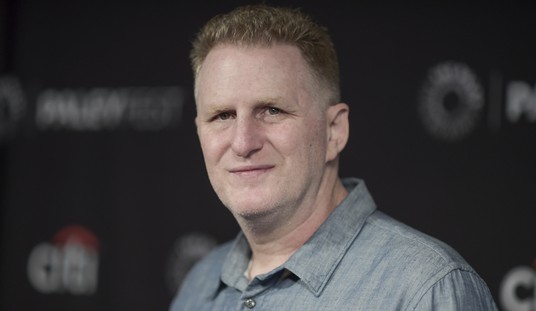Poor Garry McCarthy. Only a few years ago he was on top of the law-enforcement world. He had risen through the ranks of the New York Police Department to become a deputy commissioner, from which position he was induced to cross the Hudson River and take command of the police department in Newark. During his tenure there, crime fell by 21 percent, with homicides down by 28 percent and shootings down by 46 percent. So impressed by this record was Rahm Emanuel that upon his 2011 election as mayor of Chicago, he invited McCarthy to become superintendent of that city’s police department.
It’s hard to imagine someone in Chicago longing for the good old days in Newark, but I suspect that’s just what McCarthy must be doing, for he is now out of a job, cast off as an expendable in the cause of keeping Emanuel’s name on the door at City Hall. McCarthy may have come to Chicago thinking he was going to show the rubes on the prairie how police work is done in the Big City Back East, but in the end it was the rubes who showed him how politics is done in Chicago.
If he didn’t see it coming, he had no business in the job in the first place. I can’t claim any great expertise in the ways of Chicago politics, but I am very much of a Chicagophile. Ever since my first of many visits to the city some 30 years ago, I’ve wondered how Chicago simultaneously produced some of the greatest people I’ve known and some of the most loathsome politicians the country has ever seen. Stuff for another column someday, perhaps.
But even with my limited knowledge of the city, I know that the first rule of Chicago politics, perhaps the only immutable rule, is that the Big Man at City Hall always survives. No matter how big the controversy, no matter how sordid the scandal, no matter how high the muck rises at City Hall, it must be stopped before it reaches the mayor’s office on the fifth floor. If some patsy must be sacrificed in the process of saving the Big Man, so be it. In the matter of the police shooting of 17-year-old Laquan McDonald, Garry McCarthy was that patsy.
You have no doubt seen the police dashboard camera video of the October 2014 shooting, in which Officer Jason Van Dyke shot and killed McDonald in the middle of Pulaski Road, on Chicago’s Southwest Side. Van Dyke has been charged with first-degree murder in the case, the legal and tactical issues of which we will explore shortly. For now, we will address the politics, in particular that brand of bare-knuckle politics which, though not unique to Chicago, is practiced there with an efficiency seldom matched elsewhere.
In the death of McDonald, Rahm Emanuel was presented with a threat to his re-election. Recall that in October 2014, the nation’s attention was focused on Ferguson, Missouri, where Michael Brown had been shot and killed by a police officer two months earlier. That shooting gave rise to the Black Lives Matter Movement, which peddled the poisonous yet persistent myth of “Hands up, don’t shoot.” It’s only a 300-mile drive up the I-55 from Ferguson to Chicago, and the last thing Rahm Emanuel wanted was to offer the ruckus-raising rabble down in Missouri a reason to make that drive and bring their act to Chicago. The video of the McDonald shooting would have provided that reason, so it had to be suppressed. And not only was the video kept from public view, but in April of this year, Laquan McDonald’s family was quietly given a $5 million settlement from the city, this despite the fact that they had filed no lawsuit.
For a time, it looked like Emanuel and his crew would pull it off. But when an independent journalist sued for access to the video, and when in November a Cook County judge rejected the city’s argument that ongoing investigations into the shooting would be jeopardized if the video were to be released, Emanuel surely knew Chicago would be coming in for a rough stretch. What could be done to lessen the blow, if not necessarily to the city, at least to himself?
Coming to the mayor’s aid was Cook County State’s Attorney Anita Alvarez, who after 13 months of investigation charged Officer Van Dyke with murder. For the mob coalescing in Chicago, it was too little, too late. That they would be handed Van Dyke’s scalp was a given, but they demanded McCarthy’s, Alvarez’s, and yes, Emanuel’s as well. Alvarez is herself an elected official, so there was little Emanuel could do by way of handing her over to the torch-and-pitchfork crowd. Not so with McCarthy, though, who served at the mayor’s pleasure. On Dec. 1, McCarthy was summoned to Emanuel’s office and told his services were no longer needed.
“Superintendent McCarthy knows that a police officer is only as effective as when he has the trust of those he serves,” Emanuel said at a morning news conference. He added that there is “the undeniable fact that the public trust in the leadership of the department has been shaken and eroded.” The same might be said – but was not said – of Emanuel himself. But no matter. The mob demanded a sacrifice and Emanuel was in a position to give them one. Thank you for your service, Garry, but this is how we do things in Chicago.
It is undeniable that Emanuel, Alvarez, and McCarthy were all complicit in keeping the details of the Laquan McDonald shooting from being disclosed. They each had their own reasons for doing so, some of them legitimate, others much less so. None of them, nor the city itself, would have gained from seeing the rioting of Ferguson transplanted to Chicago. But now that the video is out and the protests have begun, the tripartite alliance has been fractured. It’s important to remember that in Chicago, every last politician is a Democrat. As such, they are all teammates when things are running smoothly, but they can be bitter rivals when conditions change. With McCarthy gone, Emanuel and Alvarez are left to face the mob’s wrath, each hoping the other will bear the worst of it.
Emanuel’s reelection is now safely behind him, but Anita Alvarez must face the voters again next year. The Van Dyke trial will likely drag on through Election Day and far beyond, not least for the fact that Alvarez knows that for all the public outrage against Officer Van Dyke, a conviction in the case is far from certain. If Van Dyke gets a verdict that is anything less than what the mob thinks it should be, they will take it out on Alvarez. Better for her that it should come after the election.
“But, Dunphy!” you say. “We’ve seen the video. Sixteen shots. How can there be anything less than a conviction for first-degree murder?”
Remember, you read it here first, but whatever the outcome for Officer Van Dyke, it will not be a first-degree murder conviction, a requirement of which is that there be no lawful justification for the killing. As ugly as that video may be, Van Dyke’s attorneys will argue in court that Laquan McDonald, who was behaving erratically and brandishing a knife, had to be stopped before he harmed an officer or someone else, and that at the time Van Dyke shot him, no lesser level of force was practical or available.
Consider: Van Dyke was one of several officers who responded to a radio call about McDonald, who was seen breaking into vehicles about a half-mile from where he would be killed. The first officers on the scene remained in their car as they trailed McDonald east on 40th Street toward Pulaski Road. In charging Van Dyke with first-degree murder, Anita Alvarez commented on the fact that none of the other officers at the scene fired at McDonald. This may sound damning of Van Dyke, but in fact it has little relevance to his guilt or innocence. For one thing, Van Dyke and his partner were the only officers to get out of their car and confront McDonald. The others remained safely inside their cars, perhaps knowing that someone was going to have to shoot McDonald but fearing – with good reason – what would happen to the cop who did. It seems plain that in charging Van Dyke as she has, in addition to appeasing the mob, Alvarez is hoping to pressure him into pleading guilty to some lesser charge. He won’t.
When the trial begins sometime next year, the jurors will be asked to ponder a number of questions. What means of stopping McDonald were available to the officers at the scene? Did any of the officers have a Taser or a beanbag shotgun? Even if a Taser had been available, would using it have been advisable? Using Taser on McDonald would have required an officer to get close enough to hit him with both darts. And if you’re close enough to a man with a knife for an effective Taser shot, you’re close enough to get stabbed. And don’t forget that McDonald’s autopsy revealed he had taken PCP, which explains his bizarre behavior. Yes, McDonald was walking away from Van Dyke when he was shot, but he had slashed a tire on one police car, and he had made aggressive gestures at the officers in another just before the shooting. How far down Pulaski Road should they have allowed the knife-wielding, drug-addled McDonald to walk before taking action, and what action short of shooting him would have stopped him?
Note that in the video, there is a car that has pulled to the curb just down the street beyond where the shooting occurs, the driver apparently yielding to the police cruiser coming north on Pulaski. What might have happened had McDonald been allowed to reach that car? Granted, the 16 rounds fired by Van Dyke were excessive, but if Van Dyke’s attorney can persuade a jury that the first shot was justifiable, at which point between that one and the sixteenth does a justifiable use of force become first-degree murder?
These will be difficult questions for the jurors to answer, especially with the very real prospect of a riot overshadowing the trial should they acquit Officer Van Dyke. And an acquittal is not as remote a likelihood as you may think.
(Artwork created using a modified Shutterstock.com image.)










Join the conversation as a VIP Member